The use of dropped sleeves was very popular in the fifties of the last century. The special shape makes clothes stylish and elegant. You can make a pattern using such a sleeve yourself. Clothes with dropped sleeves will look impressive even in cases where a simple, single-color fabric is used.
- Description of the deflated sleeve and its scope of application
- Varieties
- Selecting a material based on your body type
- Creating a pattern
- Processing technology
- Features of constructing a pattern for a top with a dropped shoulder
- Features of constructing a pattern for a blouse with a dropped shoulder
- Features of constructing a pattern for a sweater with a dropped shoulder
- Features of constructing a pattern for a dress with a dropped shoulder
Description of the deflated sleeve and its scope of application
A dropped sleeve is any sleeve whose connection line runs below the natural border between the shoulder and arm. Despite the simplicity of the cut, this method allows for many interesting and beautiful solutions. Such sleeves can be made on the basis of a raglan.
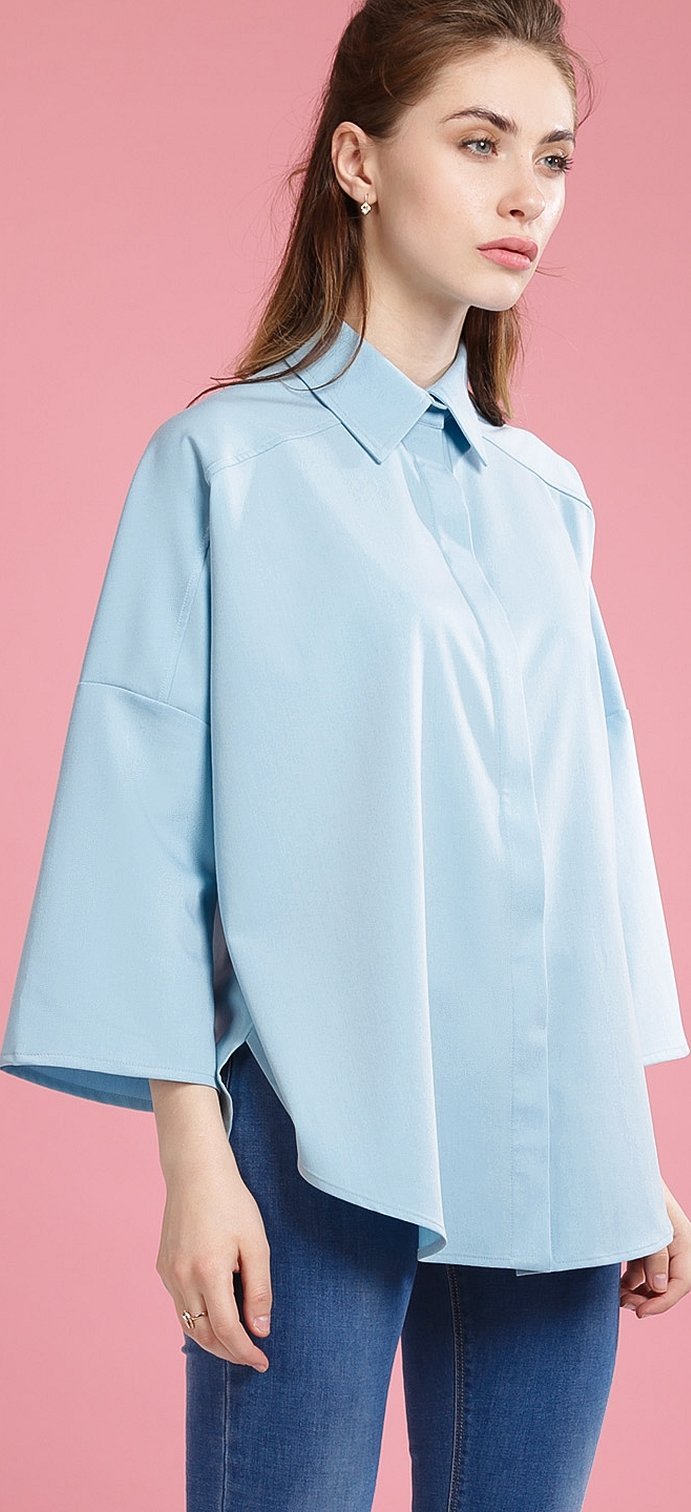
Initially, they were made for knitted clothing. They were easier to create, and at that time, loose-fitting clothing was especially popular. In fashion magazines, you could regularly see patterns that used dropped sleeves or knitting patterns for such clothing.
This type of sleeve can, for example, be sewn together with the back and front without the need to sew a separate part. In this case, it will be short. You can also cut out options with half and full sleeves. In this case, you will need to sew it.
Some examples of using this cut:
- If used in sportswear, then choose a straight or tapered cut.
- In evening wear, tapered and flared sleeves have become popular.
- If a company has a strict dress code, then dropped sleeves will highlight the beauty and originality of a woman without violating the established restrictions.
For your information! Such sleeves are used in products that were knitted with needles. The creative use of this cut is limited only by the creative imagination of the master.

Varieties
There are many varieties of such sleeves. For example, they can vary in length: short, three-quarter, long. Straight, tapered or flared cuts can also be considered.
For your information! More complex options can be used: a flashlight or a bat, for example.
Selecting a material based on your body type
When choosing a suitable pattern for a dropped sleeve, you need to take into account the features of a woman's body type. In this case, you should consider the following:
- Wearing a kimono made of a stiff material that emphasizes geometric shapes will help visually balance out heavy hips.
- A thin and angular figure will look spectacular if a loose cut dress and draped sleeves are used.
- The pattern of short dropped sleeves allows you to make a top or blouse that combines femininity with lightness and ease.
- If the cut uses a smooth line from the shoulder to the elbow, it can compensate for overly wide shoulders.
- A straight-cut, semi-fitted dress can visually make your figure look slimmer.
Such sleeves can be used not only for a blouse or dress, but also for a coat.
Please note! A well-chosen cut of dropped sleeves will highlight the advantages and compensate for undesirable features of the figure.
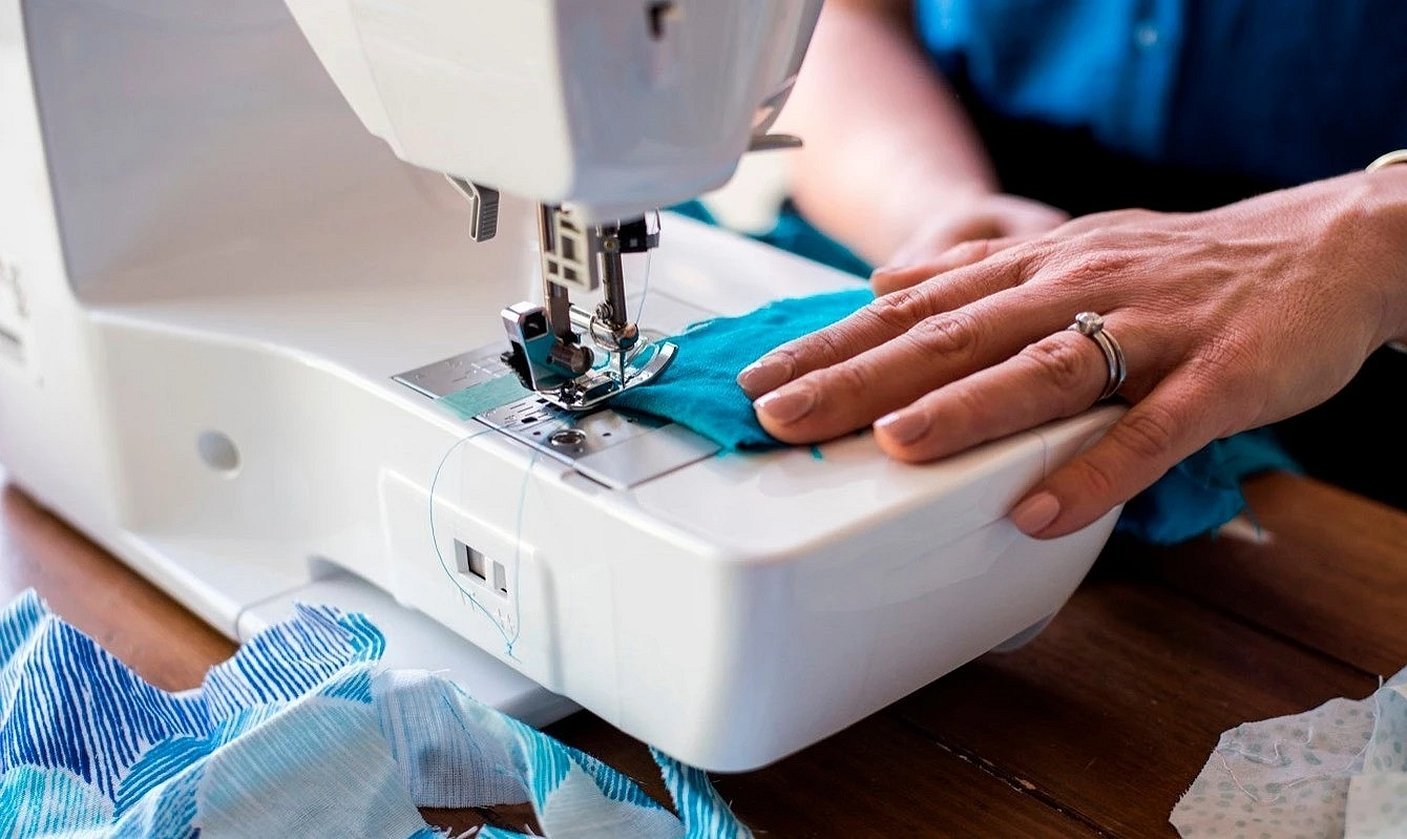
Creating a pattern
When making a dropped sleeve, the pattern is formed as follows: it is created on the basis of the basic pattern of the shoulder garment. In order to make a diagram for the required type of clothing, simple constructions will be made, on the basis of which a new pattern will be created.
To complete the work you will need the following materials and tools:
- You need to prepare some knitwear or other fabric.
- You will need a table on which to do the work.
- Scissors.
- Tracing paper.
- Pencil for taking notes.
- It is necessary to prepare a basic pattern, which should use a one-seam sleeve.
- Ruler.
- A set of patterns for cutting.
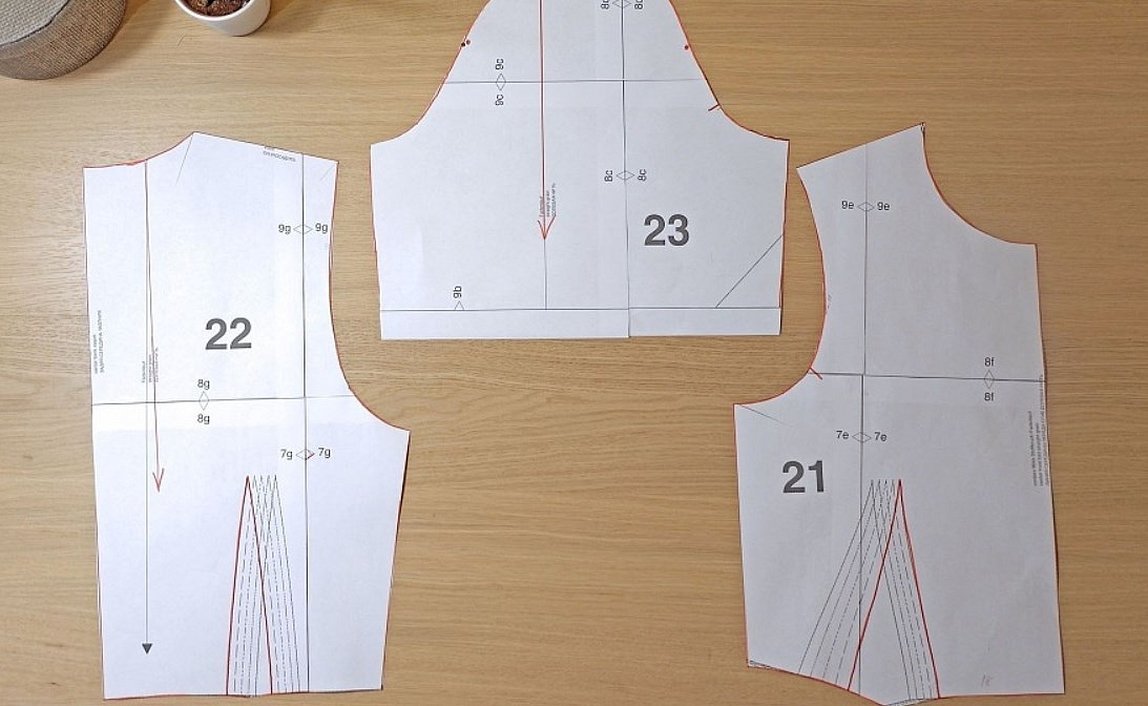
Once everything you need has been prepared, you can start cutting. The step-by-step instructions for cutting are as follows:
- The patterns of the front, back and sleeves are placed on the table and covered with tracing paper, through which they are clearly visible. To prevent the layers of paper from shifting, small and heavy objects must be placed on the tracing paper in several places. The dimensions were taken into account in the basic pattern prepared in advance.
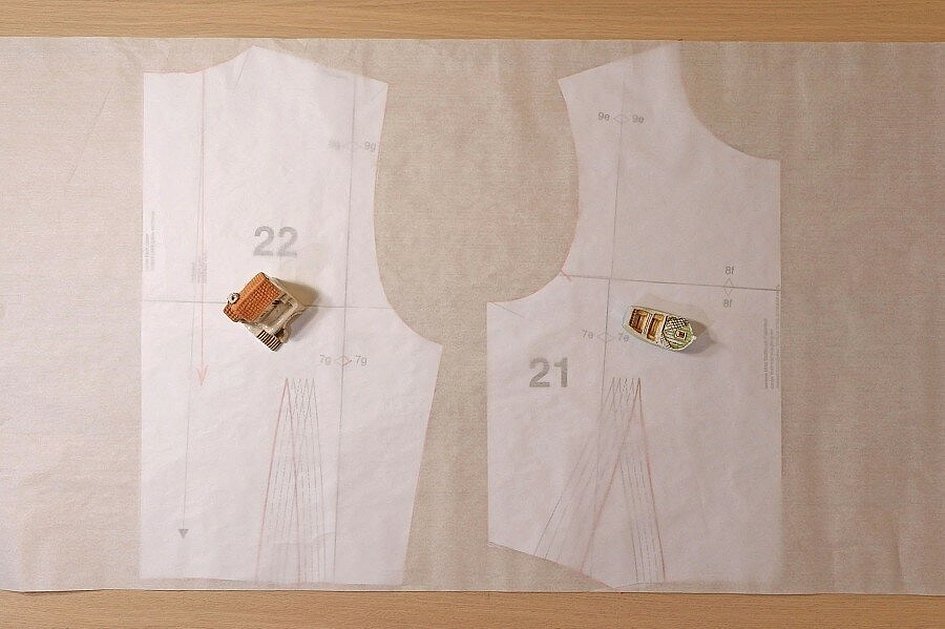
- Work begins with examining the pattern of the shelf. The upper edge of the shoulder seam is a segment of a straight line. The edge that is on the side of the neck should be shifted 2 cm to the side, widening the neckline. It is necessary to mark the new edge on the tracing paper.
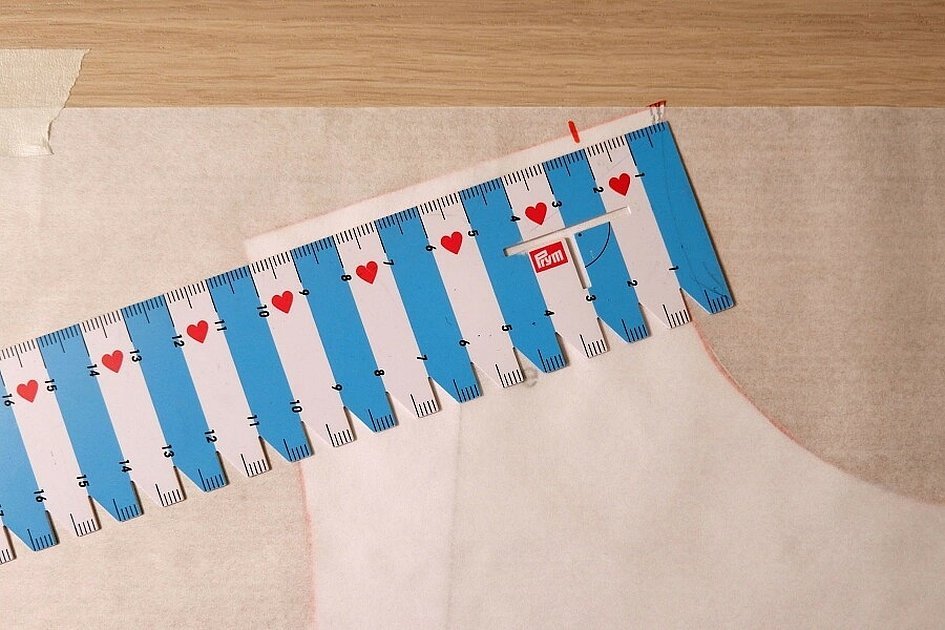
- Now you need to pay attention to the outer edge of the segment. It needs to be shifted to the side by 5 cm. From the resulting point, 2 cm are measured perpendicularly downwards.
- The previous edge of the shoulder seam and the point obtained now are connected by a rounded line. It is drawn using a suitable template. These points are called, respectively, A and B.
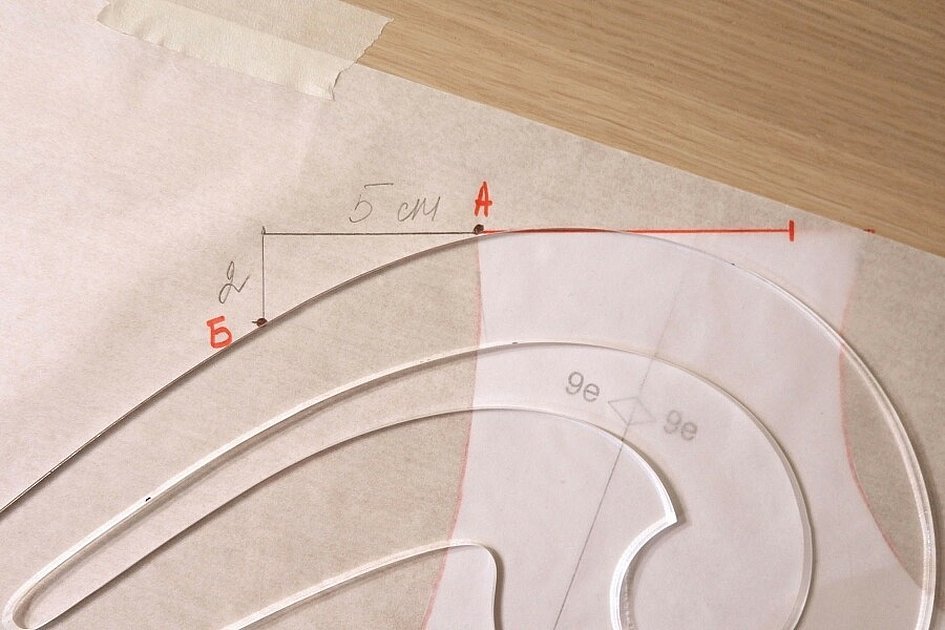
- Draw a straight line segment and drop a perpendicular from the point. It will run diagonally and intersect the armhole. This point is called B. From B to B, draw a rounded line using a template.
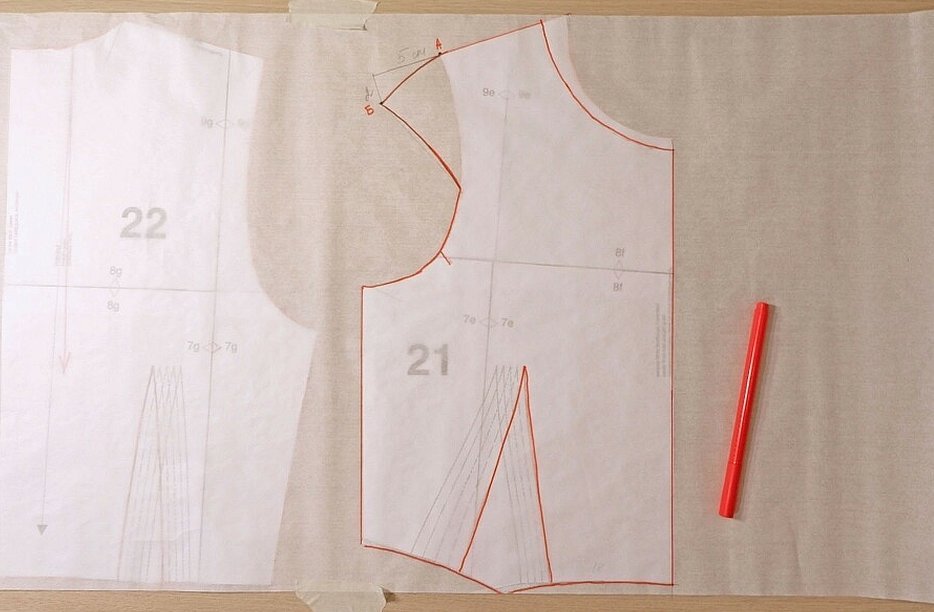
- Next, work is done on the back. The operations performed are similar to those performed with the shelf. First, you need to widen the neck by 2 cm.
- It is necessary to continue the outer part of the shoulder line by 5 cm, then measure 2 cm perpendicularly downwards.
- Using a template, draw a rounded line connecting points A1 and B1, similar to A and B.
- Make a segment A1–B1 and lower a perpendicular line to the intersection with the armhole. This point is called B1. Points B1 and B1 are connected by a rounded line. Point B1 will be located 1.5 cm lower than B.
- The lower part of the armhole usually remains unchanged. However, at the master's discretion, the descent can be made lower by 1.5–2 cm.
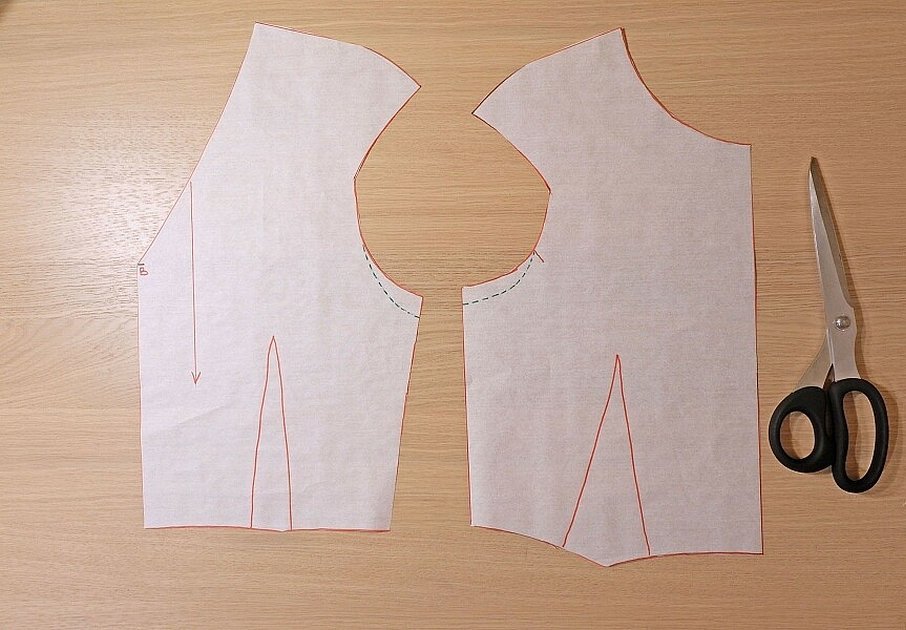
- Now we begin to adjust the sleeve pattern. To do this, we need to cut out the front and back. The lower part of the armhole up to points B and B1 is placed on the corresponding part of the sleeve and these two points are transferred to its drawing. We will get G and G1.
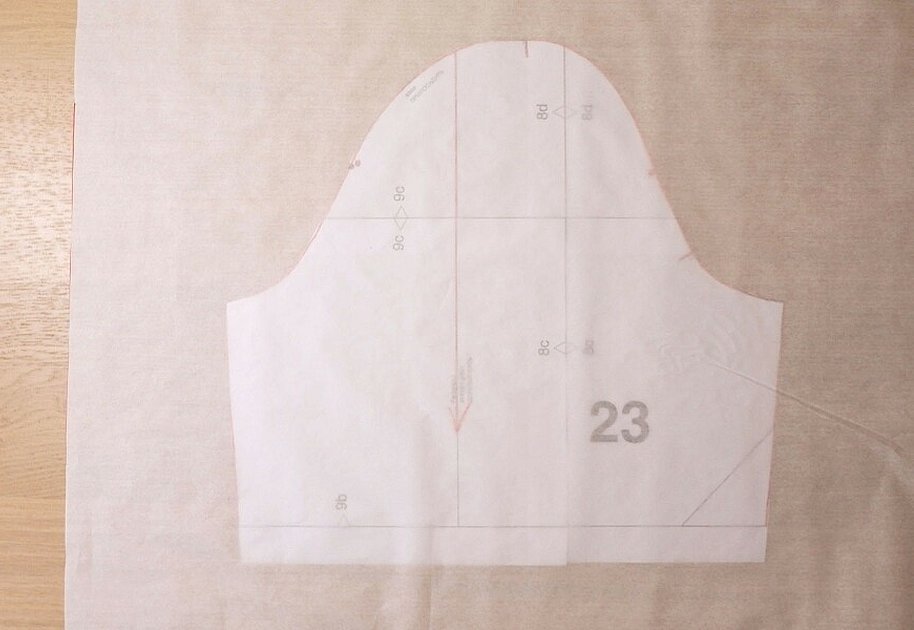
- Now it is necessary to construct a point in the highest part. From this point down 5 cm are measured and get point D.

- Now, using the template, draw a rounded line connecting points G, D and G1.
Now you need to cut out the patterns and use them to prepare the fabric.
For your information! The use of such sleeves can be combined with the use of darts.
Processing technology
Sweep and stitch the side and shoulder seams. Match points Г and Г1 on the sleeve with the corresponding points on the armhole and baste. Then attach the upper part of the sleeve. After this, you need to try it on. If everything is done correctly, everything can be sewn together.
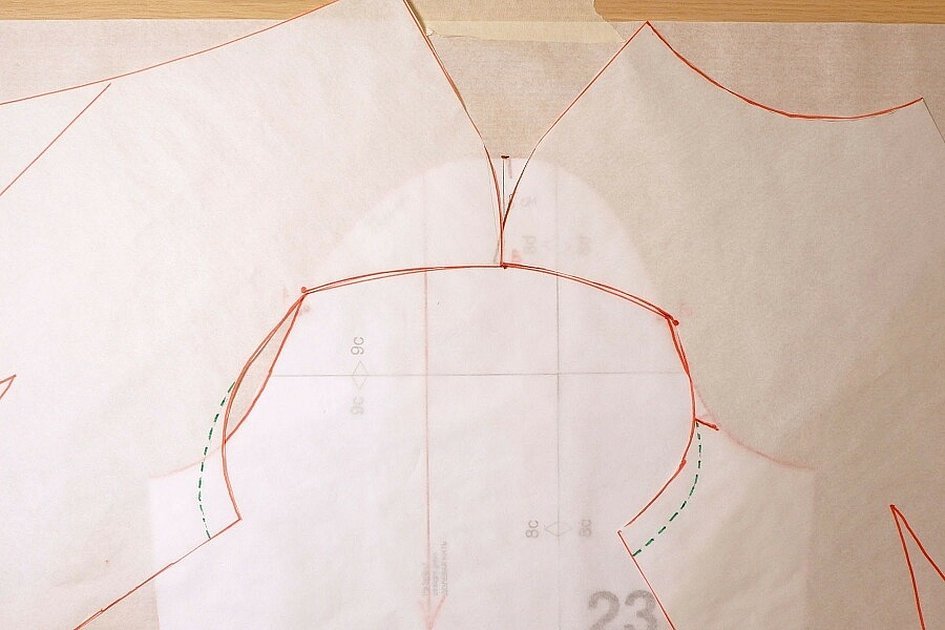
Features of constructing a pattern for a top with a dropped shoulder
The pattern of the top is made in the usual way, described above. However, here it is necessary to make a facing. The sleeves in the top are one piece with the back and the front. The facing is made on the outer part of the dropped sleeves. To do this, the strip is applied from the outside. It is sewn along the edge.
Then the strip is turned inside the sleeve and a second seam is made to secure it. After this, the seams must be carefully ironed.
For your information! The following fabrics are commonly used for the top: chiffon, crepe georgette, thin satin or other light and airy fabrics.

Features of constructing a pattern for a blouse with a dropped shoulder
These blouses look very feminine, adding a slight artistic sloppiness. Various types of patterns can be used:
- The peculiarity of the one-piece sleeve is that it is part of the front and back. At the same time, it is very short. If the craftswoman wants to give the blouse a more original look, she can use a pattern of a blouse with a dropped shoulder in combination, for example, with a beautiful neckline.
- The classic sewn-on type will look original, since its beginning is located in the middle of the shoulder.
- Off-the-shoulder blouses are becoming increasingly popular (for example, the "peasant" blouse). In this model, the sleeve starts from the middle of the shoulder. It can be short or long.
For your information! The use of the considered types of sleeves combines relative ease of manufacture with an original and stylish look.
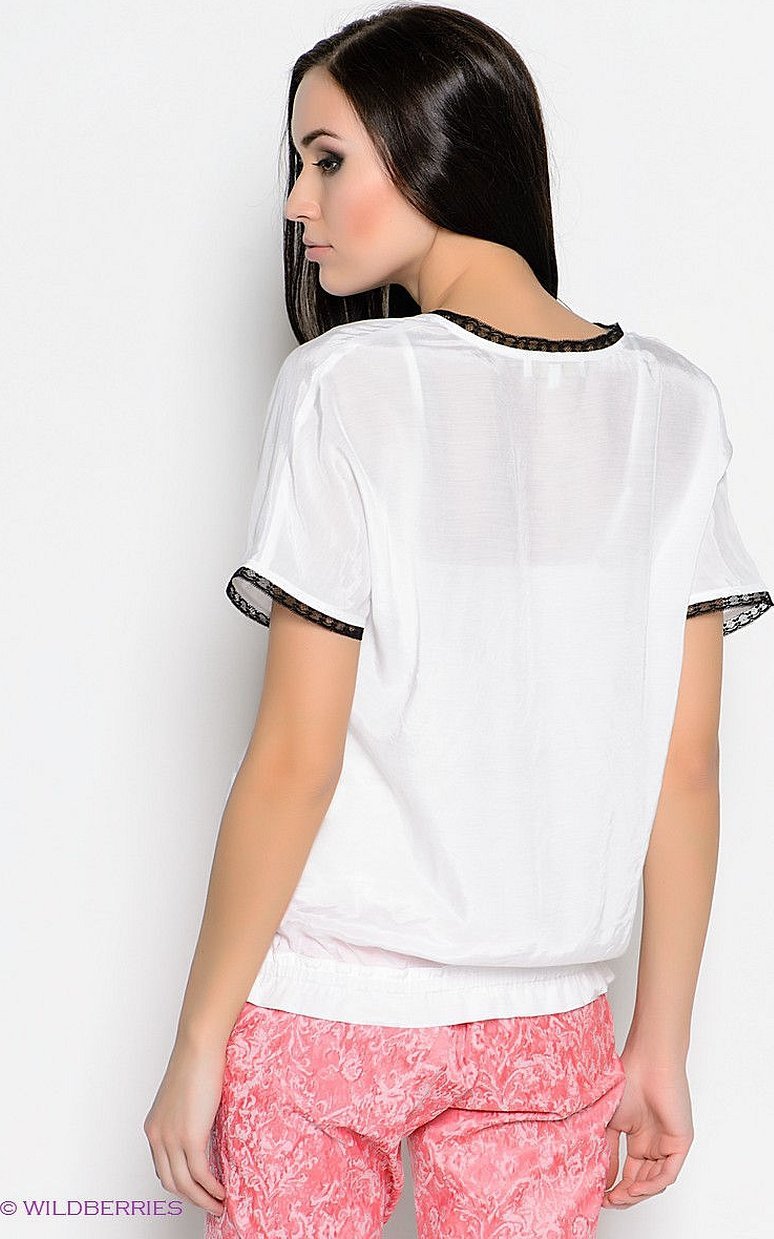
Features of constructing a pattern for a sweater with a dropped shoulder
There are significant differences between a sweater and a blouse:
- A blouse is a stylish fitted garment made of lightweight fabric. It is a type of beautiful outerwear. It often uses decorations: frills, ruffles or beaded appliques.
- A blouse is usually the base for outerwear. The collar is usually high and turn-down, fastenings are zippers or buttons.
Please note! Their main difference is in the area of application. The blouse has a much more formal look. The sweater is often considered casual. It will be appropriate at work or when attending formal events.
Dropped sleeves are used for a blouse made of lighter fabrics. The most attractive in this case will be a plain fabric. The sleeves are tucked. 1 cm is added to the shoulder and side armholes when making the pattern.
Features of constructing a pattern for a dress with a dropped shoulder
Such dresses look light, airy and feminine. Such a variety of dropped sleeves as bare shoulders has become widespread. In this case, the upper edge of the dress is located along the horizontal line. A pattern of a dress with a dropped shoulder will help to make an original and beautiful outfit. A woman can decrease or increase the height of the upper edge, changing the degree of bareness of the shoulders.
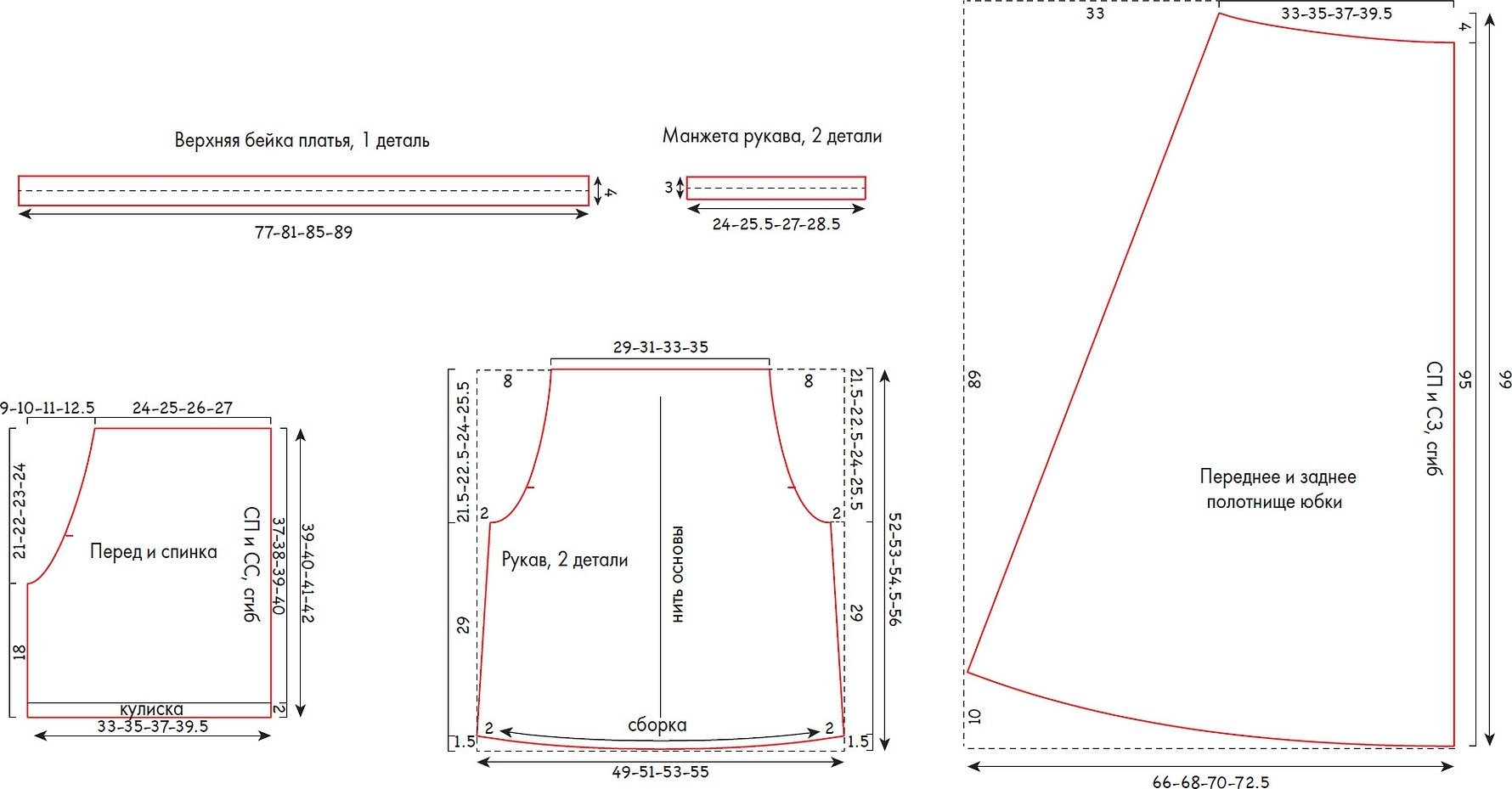
Every woman wants to wear beautiful, stylish and original clothes. However, it is not always possible to find suitable dresses or blouses in stores. In this case, it makes sense to replenish your wardrobe with self-sewn clothes. A pattern for a top with a dropped shoulder can help solve the problem, and even novice craftswomen can make it themselves.




